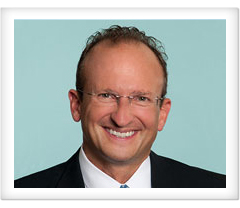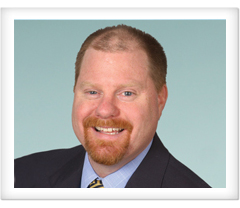| |
 Alerts & Advisories Alerts & Advisories
 Industry Reports & Newsletters Industry Reports & Newsletters
 Published Articles Published Articles
 Social Media & Blogs Social Media & Blogs
 Brochures Brochures

|
 |
Intellectual Property Alert
Computer Implementation Not Enough to Render Abstract Ideas Patent Eligible
06.20.2014
By Richard Gervase, Jr., Mike Renaud, and Sandra Badin
The Supreme Court yesterday issued its long-awaited decision in Alice Corporation v. CLS Bank International addressing the patent eligibility of computer-implemented inventions under 35 USC §101. The Court’s unanimous decision affirms the Federal Circuit’s holding that all the patent claims at issue, which include method, system, and media claims, are drawn to the patent-ineligible abstract idea of intermediated settlement, and further holds that “merely requiring generic computer implementation fails to transform that abstract idea into a patent-eligible abstract idea.”
The Court’s principal concern in assessing patent eligibility under §101 is pre-emption—that granting patents over laws of nature, natural phenomena, and abstract ideas effectively grants a monopoly over “the basic tools of scientific and technological work,” with the unwanted effect of impeding rather than promoting innovation. Proper application of §101 requires distinguishing between the “building blocks of human ingenuity” (which are not patent-eligible) and the “integrat[ion of] those building blocks into something more” (which is). The difficulty is in determining where to draw the line.
The Court applied the same two-step framework it articulated in its 2012 decision, Mayo Collaborative Services v. Prometheus Laboratories, Inc.: (1) determine whether the claims at issue are directed to one of the patent-ineligible categories, here abstract ideas, and, if so, (2) determine whether the elements of each claim, both individually and “as an ordered combination,” contain an “inventive concept” sufficient to transform the unpatentable abstract idea into a patent-eligible application. This second step requires determining whether practicing the claim entails doing “significantly more” than practicing or implementing the basic, patent-ineligible concepts themselves. If it does not, the claim is not patent eligible.
Applying the first step of the Mayo framework, the Court held that the claims at issue are directed to the abstract idea of intermediated settlement to mitigate financial risk, which, like the risk-hedging idea in Bilski v. Kappos (2010), is “a fundamental economic practice long prevalent in our system of commerce.” In so holding, the Court rejected petitioner’s argument that abstract ideas are limited to “pre-existing fundamental truths” that are independent of human action. Beyond rejecting petitioner’s arguments, however, the Court did not elaborate on what makes an idea abstract. Indeed, it specifically declined to “labor to delimit the precise contours of the ‘abstract ideas’ category in this case,” and instead relied on its determination “that there is no meaningful distinction between the concept of risk hedging in Bilski and the concept of intermediated settlement at issue here.”
Having determined that the claims at issue are directed to the abstract idea of intermediated settlement, the Court next turned to the second step in the Mayo framework—determining whether the elements of the claims, either individually or in combination, transform the abstract idea into a patent-eligible invention. It held that they do not, and held each of the method, media, and system claims patent-ineligible on that basis.
For the method claims, the Court noted that “the mere recitation of a generic computer cannot transform a patent-ineligible idea into a patent-eligible invention.” The Court reasoned that to hold otherwise would be to permit the very monopolization of abstract ideas the Court’s pre-emption doctrine is meant to prevent. “An applicant could claim any principle of the physical or social sciences by reciting a computer system configured to implement the relevant concept.” The Court said “the relevant question is whether the [method] claims here do more than simply instruct the practitioner to implement the abstract idea of intermediated settlement on a generic computer,” and held that they do not. The method claims do not “purport to promote the functioning of the computer itself,” or to “effect an improvement in any other technology or technical field,” but instead merely perform the “purely conventional” steps of electronic recordkeeping, obtaining data, adjusting account balances and issuing automated instructions. This “amount[s] to nothing significantly more than an instruction to apply the abstract idea of intermediated settlement using some unspecified, generic computer.” That is simply not enough, the Court said, “to transform an abstract idea into a patent-eligible invention.”
The Court held that the computer system and media claims are patent ineligible for substantially the same reason. The petitioner itself conceded below that the media claims rose or fell with the method claims. As for the system claims, the Court rejected petitioner’s characterization that the claims recite “‘specific hardware’ configured to perform ‘specific computerized functions,’” noting that the so-called “specific hardware” in question, which includes a “‘data processing system’ with a ‘communications controller’ and ‘data storage unit,’ for example … is purely functional and generic,” and present on “[n]early every computer.” “Because petitioner’s system and media claims add nothing of substance to the underlying abstract idea, we hold that they too are patent ineligible under §101.”
It is important to note, however, that the Court did not hold that computer-implemented claims as a whole are not patent eligible. Indeed, it observed that “[t]here is no dispute that a computer is a tangible system (in §101 terms, a “machine”), or that many computer-implemented claims are formally addressed to patent-eligible subject matter.” Computer implementation alone is just not sufficient to render an otherwise unpatentable claim patentable.
Concurring in the Court’s opinion, Justice Sotomayor, joined by Justices Ginsburg and Breyer, added that she adheres to the view that business method claims do not qualify as patent eligible, an issue not addressed by the plurality.
It is not yet clear what the effect of Alice will be. At the very least, it seems likely that patent claims directed to computer-implemented methods and systems for engaging in “fundamental economic practice[s] long prevalent in our system of commerce” will be subject to more vigorous §101 challenges. But beyond Bilski- and Alice-like claims, it remains to be seen how the Court’s two-part framework for determining patent eligibility will be applied and developed or how its “abstract ideas” category will be delineated and fleshed out by the Federal Circuit, the lower courts, and the Patent and Trademark Office over the coming years. For patent prosecutors, however, given the Court’s overarching concern with preemption and preventing applicants from obtaining a monopoly on abstract ideas and other excluded categories, the focus will have to be on ensuring that claims are drafted in such a way that they cannot be mistaken for abstract ideas, natural phenomena or laws of nature in the first instance—this will mean more narrow and more concrete descriptions of what is claimed—and in such a way that makes clear how they either “promote the functioning of the computer itself,” or “effect an improvement in any other technology or technical field.”

|
|

Richard Gervase, Jr., Member

Mike Renaud, Member

Sandra Badin, Associate

Related Practices
|
|